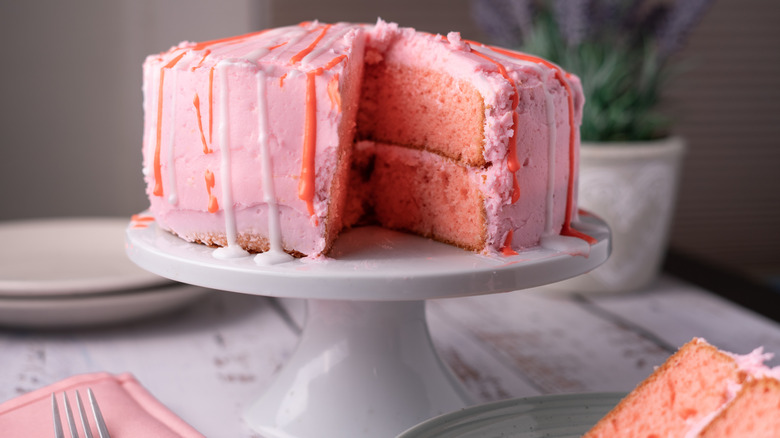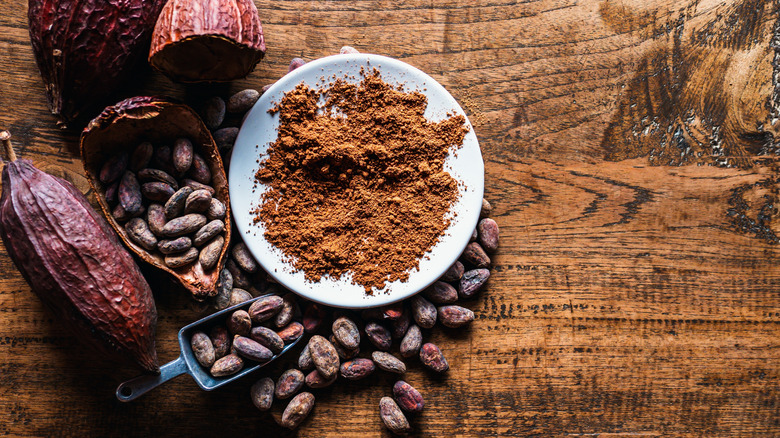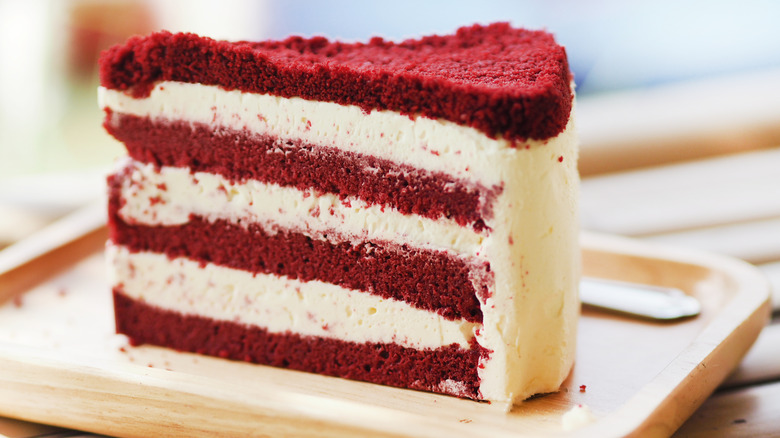Pink Velvet Vs Red Velvet Cake: What Is The Difference?
Pink velvet and red velvet cake ... are they the same? If you're like me, you may have never even heard of pink velvet cake before today. Or, perhaps you heard of it and thought it just came down to the color, but that the tastes were relatively similar.
You might be surprised to learn that they have more differences than similarities. It reminds me of the time I realized that there was a substantial difference between turtles and tortoises, and that most people, including myself, had been meaning to say tortoise just about every time that I said turtle — for most of my life. Long story short, this is another case of mistaken identity.
Pink velvet cake is the lesser-known relative of the red velvet cake. The pink version offers a softer pastel-colored presentation, making it a hit at baby showers, birthdays, and other spring-themed events. It also has a different flavor profile and a key ingredient missing that gives you that signature red velvet slice.
The red version's vibrant and deeper shade is preferred at weddings, parties, and holiday celebrations. As you can see, there are a few notable distinctions that make them quite different from one another. So, what is pink velvet cake in comparison to it's well-known cousin? Let's get into it.
The cocoa difference
When it comes to flavor, the taste of red velvet cake is mainly driven by the use of cocoa powder. Even though the amount of cocoa pales compared to that of traditional chocolate cakes, it's formidable enough to play an integral role in the cake's identity. Moreover, the cocoa, together with buttermilk, produces a hint of tang that serves to balance the sweetness. The end result? A rich and unique bite that isn't overpoweringly chocolatey.
On the other hand, cocoa powder is forsaken altogether with pink velvet cake. Interestingly, vanilla is the prominent ingredient that is coupled with other flavoring agents to create its delightful taste. The absence of cocoa makes pink velvet cake lighter and sweeter, and it is often thought to be more delicate on the palate. Pink velvet's flavor makes it an excellent choice for those who want a dessert that's less rich than red velvet, but still moist and flavorful.
Visual appeal and texture
Undoubtedly, when you picture a red velvet cake, you picture its signature deep red color; this vibrancy is achieved through the magic of science. Cocoa powder contains an antioxidant called anthocyanin, which changes color when exposed to acids or bases. When you mix raw cocoa powder with acidic ingredients like buttermilk, it reacts and turns a dark red.
This color shift happens because anthocyanin is sensitive to pH levels. There's also a touch of food coloring to really bring it home. It is the contrast of these rich hues against the smooth, creamy texture of a cream cheese frosting that makes for such a stunning presentation. It's moist and dense with a velvety crumb, which leaves a lasting impression nine times out of ten. Red velvet is all around decadent.
Yes, pink velvet cake looks very similar to red velvet, but it also has a lighter and airier appearance, which is achieved by red food coloring mixed with usually white or yellow cake mix. Both cakes share the signature moist crumb that comes from using buttermilk in the batter, ensuring a luxurious texture in every bite. And yes, they both use the rich cream cheese frosting, which is probably the main reason for the great mix-up between the two. However, they are very different in flavor, but both are delicious. Refusing to try both on for size is out of the question.


